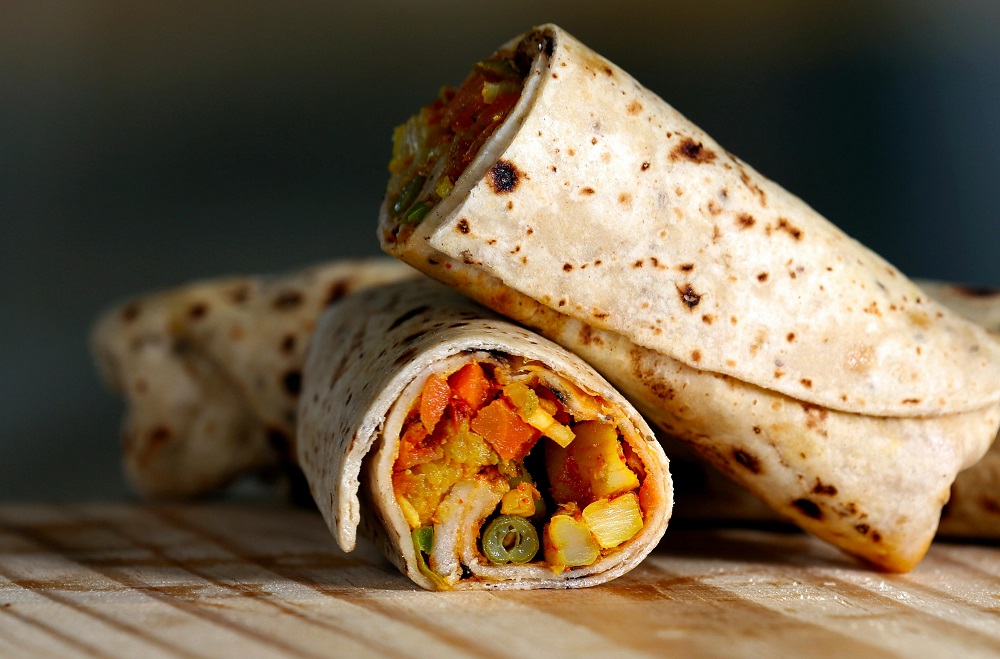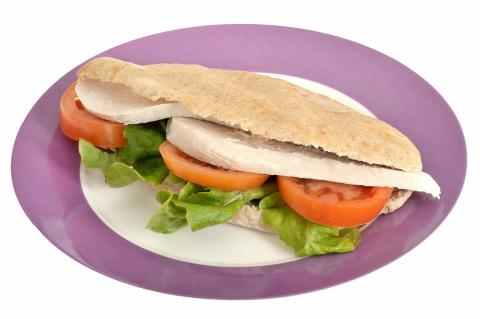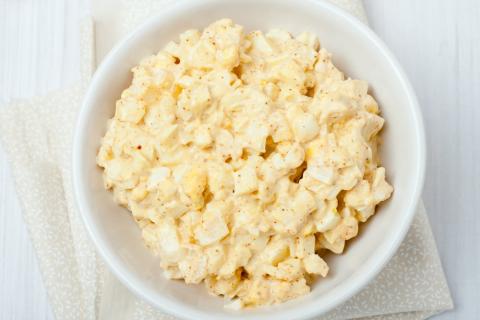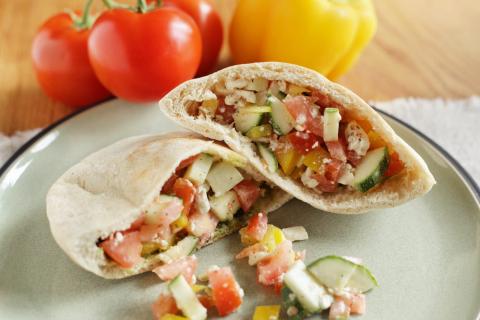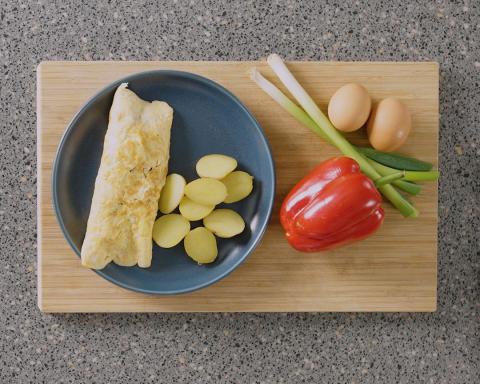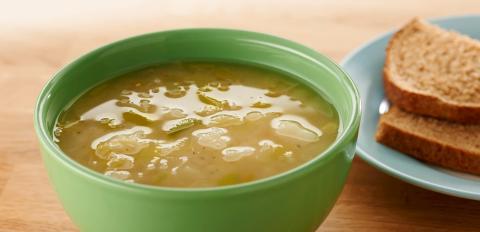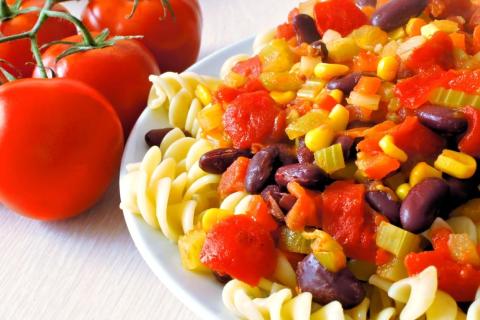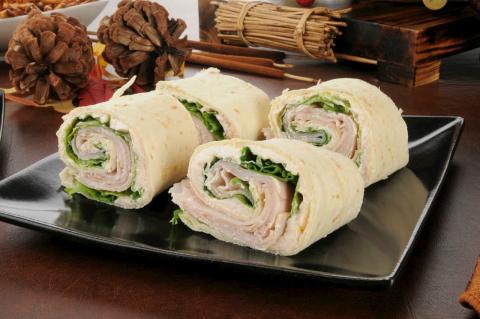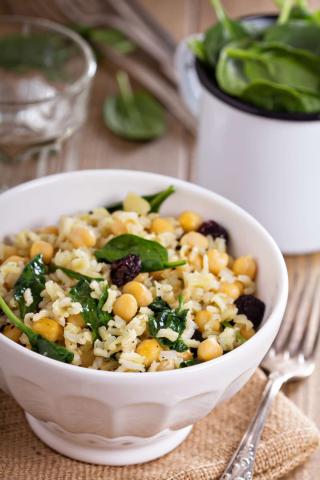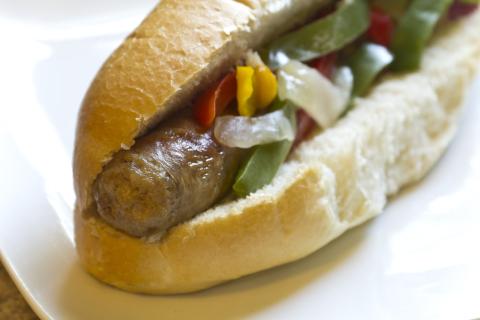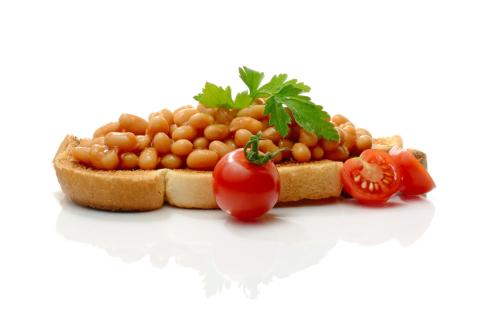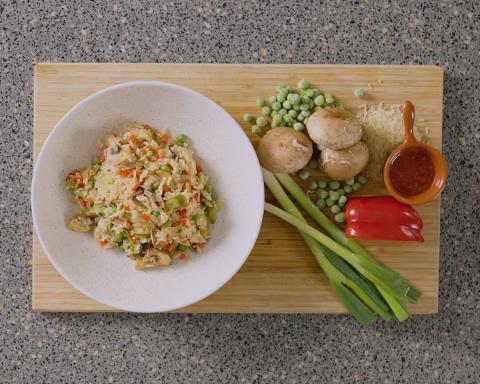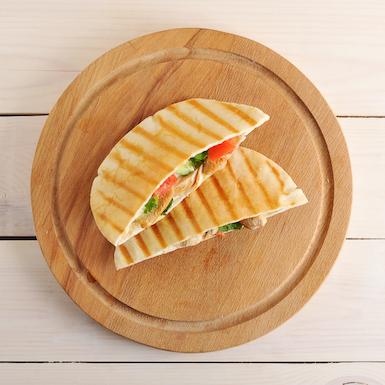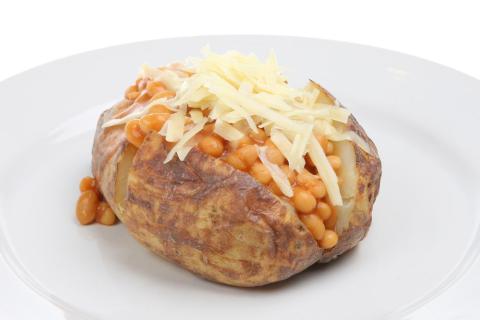- 2 Medium sized (170g) Tomatoes
- 1 Small sized (60g) Red onion
- ¼ (120g) Cucumber
- 1 Tablespoon (1g) Fresh Coriander
- 1 Tablespoon (10g) Vegetable Oil
- 4 (160g) Wheat Flour Tortillas
- 6 Tablespoons (60g) Reduced Fat Cheddar Cheese
- To taste Ground Black Pepper
Ingredients
Allergy Disclaimer
Always check the label of each ingredient for allergy warnings.
Method
- Grate the cheese and set to one side then peel and finely dice the onion. Finely dice the tomatoes and cucumber. Finely chop the coriander and then mix with onion, tomatoes and cucumber to make the salsa.
- Heat a few drops of oil in a large frying pan. Add one of the tortillas to the pan and then turn it over so it is lightly oiled.
- Add a quater of the salsa mixture and spread over the tortilla. Add a quarter of the cheese and sprinkle with black pepper.
- Cook over a medium heat for 1-2 minutes, until the cheese starts to melt and the tortilla browns slightly.
- Fold the tortilla in half and wrap in tin foil to keep warm while cooking the remaining tortillas.
- Slice in half and serve while hot.
Time Saver Tips
Salsa can be made in advance. Buy pre grated cheese and salsa.
Cost Saver Tips
White onions can be used if you don't have any red onions.
Tips for Kids
Why not let them help to prepare the salsa?
Nutritional Information
Based on a single serving of 130g (% of an adult's reference intake)
Energy
183 kcals ( 9 %)
770 kJ ( 9 %)
Fat
1.8 g ( 9 %)
Saturates
26.9 g ( %)
Sugar
3 g ( 3 %)
Salt
0.9 g ( 15 %)
Detailed nutritional information
| Per 100g | Per 130g serving | |
|---|---|---|
| Energy Kcals | 140 | 183 |
| Energy Kj | 593 | 770 |
| Protein | 6.4 g | 8.3 g |
| Total Fat | g | g |
| Saturated Fat | 1.4 g | 1.8 g |
| Carbohydrates | 20.7 g | 26.9 g |
| Total Sugars | 2.3 g | 3 g |
| NSP Fibre | 1.4 g | 1.8 g |
| Sodium | 169 mg | 220 mg |
| Salt | 0.7 g | 0.9 g |
Find out about nutritional labelling
Nutrition labels on the front of packaging
- Most of the big supermarkets and many food manufacturers display nutritional information on the front of pre-packed food.
- Front of pack nutrition labels provide information on the number of grams of fat, saturated fat, sugars and salt and the amount of energy (in kJ and kcal) in a serving or portion of a recipe.
- The labels also include information about reference intakes (expressed as a percentage) which are guidelines about the approximate amount of particular nutrients and energy required for a healthy diet.
- The colour coding tells you at a glance if the food has high (red), medium (amber) or low (green) amounts of fat, saturated fat, sugars and salt.
- The more greens on the label, the healthier the choice
- Amber means neither high nor low, so you can eat foods with all or mostly ambers on the label most of the time.
- Reds on the label means the food is high in that nutrient and these are the foods we should cut down on. Try to eat these foods less often and in small amounts.
Food shopping tips
If you’re trying to decide which product to choose, check to see if there's a nutrition label on the front of the pack. This will help you to quickly assess how your choices stack up. You will often find a mixture of red, amber and green colour coding for the nutrients. So when you're choosing between similar products, try to go for more greens and ambers and fewer reds if you want to make a healthier choice.
 Activities & Play
Activities & Play Behaviour
Behaviour Childcare
Childcare Development & Growing Up
Development & Growing Up Family, Friends & Relationships
Family, Friends & Relationships Feeding Your Baby
Feeding Your Baby Food & Eating
Food & Eating Health & Safety
Health & Safety Mental Health & Wellbeing
Mental Health & Wellbeing Money & Work
Money & Work Online Behaviour & Safety
Online Behaviour & Safety Pregnancy & First Days
Pregnancy & First Days School & Education
School & Education Sleep
Sleep

